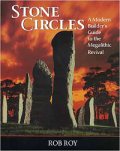<< Text Pages >> Tartus Museum - Museum in Syria
Submitted by davidmorgan on Wednesday, 22 September 2010 Page Views: 4252
MuseumsSite Name: Tartus MuseumCountry: Syria Type: Museum
Nearest Town: Tartus
Latitude: 34.891821N Longitude: 35.878676E
Condition:
| 5 | Perfect |
| 4 | Almost Perfect |
| 3 | Reasonable but with some damage |
| 2 | Ruined but still recognisable as an ancient site |
| 1 | Pretty much destroyed, possibly visible as crop marks |
| 0 | No data. |
| -1 | Completely destroyed |
| 5 | Superb |
| 4 | Good |
| 3 | Ordinary |
| 2 | Not Good |
| 1 | Awful |
| 0 | No data. |
| 5 | Can be driven to, probably with disabled access |
| 4 | Short walk on a footpath |
| 3 | Requiring a bit more of a walk |
| 2 | A long walk |
| 1 | In the middle of nowhere, a nightmare to find |
| 0 | No data. |
| 5 | co-ordinates taken by GPS or official recorded co-ordinates |
| 4 | co-ordinates scaled from a detailed map |
| 3 | co-ordinates scaled from a bad map |
| 2 | co-ordinates of the nearest village |
| 1 | co-ordinates of the nearest town |
| 0 | no data |
Internal Links:
External Links:
Museum in Syria.
Occupying the 13th century CE crusader Cathedral of Our Lady of Tortosa, the National Museum of Tartus has pieces from Ugarit, Arwad and Amrit.
You may be viewing yesterday's version of this page. To see the most up to date information please register for a free account.
Do not use the above information on other web sites or publications without permission of the contributor.
Nearby sites
Click here to view sites on an interactive map of the areaDownload sites to:
KML (Google Earth)
GPX (GPS waypoints)
CSV (Garmin/Navman)
CSV (Excel)
To unlock full downloads you need to sign up as a Contributory Member. Otherwise downloads are limited to 50 sites.
Nearby sites listing. In the following links * = Image available
2.2km NNE 24° Amrit Sacred Spring Holy Well or Sacred Spring
2.7km ENE 78° Amrit Meghaziles* Chambered Cairn
4.4km SSW 205° Arados* Ancient Village or Settlement
33.7km E 83° Baitokaike Temple of Zeus* Ancient Temple
46.3km N 5° Sukas Ancient Village or Settlement
49.8km S 186° Tripoli (Lebanon)* Ancient Village or Settlement
50.0km SE 127° Beit Djallou Temple of Nemesis Ancient Temple
57.0km SSE 163° Sfire Temples Ancient Temple
63.2km SE 136° Brissa Stele Sculptured Stone
66.1km S 185° Amioun Necropolis Rock Cut Tomb
67.1km S 183° Qasr Naous West Temple Ancient Temple
67.1km S 183° Qasr Naous Temple Ancient Temple
68.0km S 175° Monastery of Saint Anthony of Qozhaya Ancient Temple
69.3km S 184° Bziza Temple Ancient Temple
69.4km ESE 122° Kadesh Tell* Ancient Village or Settlement
74.8km SE 134° Qamouat el-Hermel Marker Stone
75.3km SE 143° Deir Mar Maroun Ancient Village or Settlement
76.4km NE 38° Apamea* Ancient Village or Settlement
78.5km NE 41° Syrian tell* Ancient Village or Settlement
79.4km N 354° Ugarit Palace* Ancient Palace
79.5km N 354° Ugarit* Ancient Village or Settlement
79.6km N 354° Ugarit Temples* Ancient Temple
83.8km ENE 71° Hama National Museum Museum
83.8km ENE 71° Hama.* Ancient Village or Settlement
87.1km S 178° Aphaca* Holy Well or Sacred Spring






 We would like to know more about this location. Please feel free to add a brief description and any relevant information in your own language.
We would like to know more about this location. Please feel free to add a brief description and any relevant information in your own language. Wir möchten mehr über diese Stätte erfahren. Bitte zögern Sie nicht, eine kurze Beschreibung und relevante Informationen in Deutsch hinzuzufügen.
Wir möchten mehr über diese Stätte erfahren. Bitte zögern Sie nicht, eine kurze Beschreibung und relevante Informationen in Deutsch hinzuzufügen. Nous aimerions en savoir encore un peu sur les lieux. S'il vous plaît n'hesitez pas à ajouter une courte description et tous les renseignements pertinents dans votre propre langue.
Nous aimerions en savoir encore un peu sur les lieux. S'il vous plaît n'hesitez pas à ajouter une courte description et tous les renseignements pertinents dans votre propre langue. Quisieramos informarnos un poco más de las lugares. No dude en añadir una breve descripción y otros datos relevantes en su propio idioma.
Quisieramos informarnos un poco más de las lugares. No dude en añadir una breve descripción y otros datos relevantes en su propio idioma.